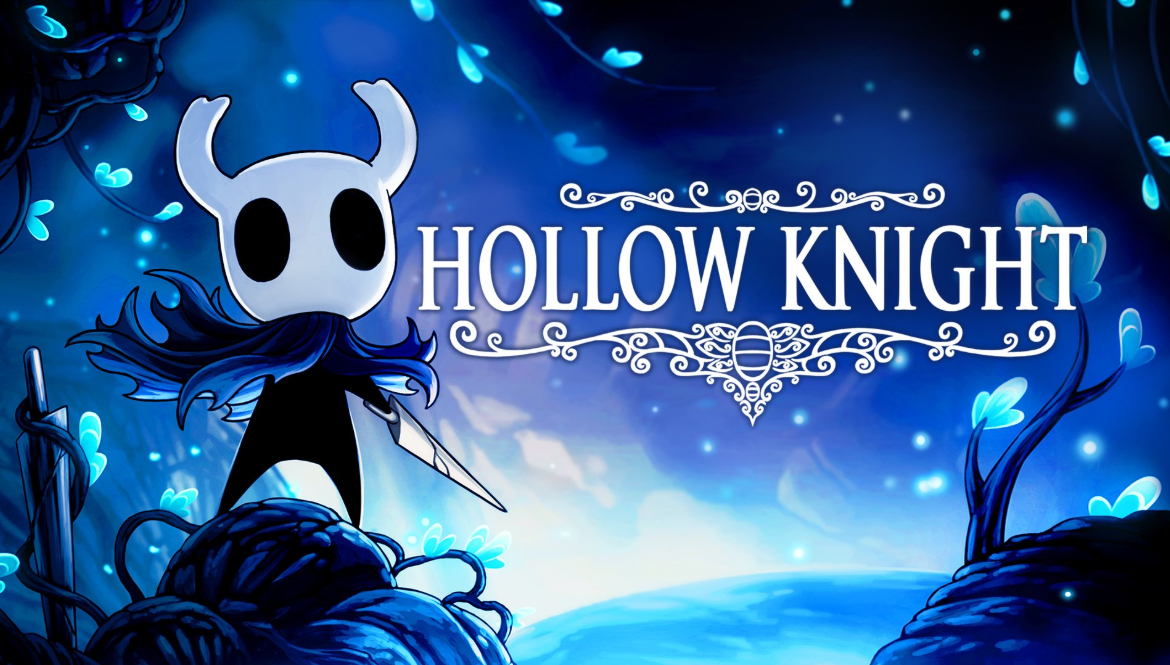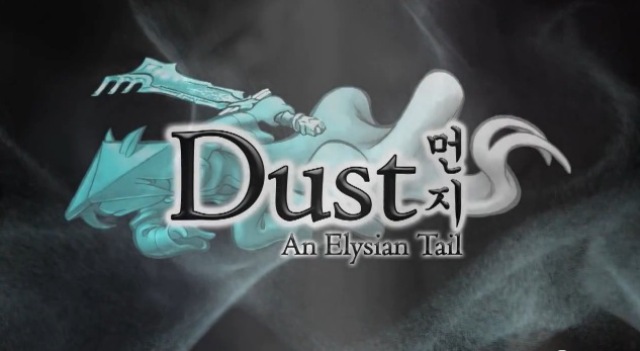Published & developed by Australian studio Team Cherry, Hollow Knight is a Metroidvania 2D side-scroller that borrows its dark, macabre style from games like Dark Souls, while attempting to give the genre a unique spin of its own.
You control an insect-like knight, the Hollow Knight, as they embark upon on a quest to uncover the many secrets of the ancient Hallownest Kingdom, overrun with sick inhabitants & mystery. The further you venture into the kingdom, the more knee-deep in enemies you’ll become as you try to uncover the obscure story being told & find out why the Knight’s existence is tied to the long-dead kingdom.
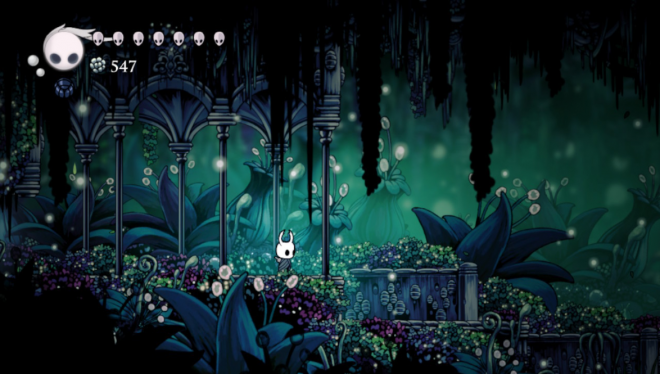
Here’s what I liked:
Deep Lore – At a surface level, the narrative of Hollow Knight is fairly light & nonexistent. There are NPC’s scattered around the areas you explore, but unless you dig deeper, pay attention & connect the dots, you won’t be able to see the larger picture being painted. This method of storytelling actually works in the game’s favor, as it meshes neatly with the theme of exploration in the gameplay itself. With each area you visit, each NPC you speak to, or each item you come across – the deeper your understanding of the story will become. You’ll find yourself realizing that characters you came across earlier while exploring, who were thought to be insignificant, are actually rather important & central to the narrative. Thanks to the many content updates, there are also five endings to achieve that expand some details of the story (a few of those endings require the player to complete very obscure tasks to unlock them, so it’s wise to always be on the lookout for important items & pay attention to NPC dialogue). Hollow Knight rewards intuitiveness & those who seek to uncover the deeper elements at play.
Art Style – Much like every other aspect of Hollow Knight the art style is dripping in macabre hues of blue & grey. Team Cherry utilized the Unity software by creating 2D objects & placing them in a 3D map which allows for the final product to really pop & give depth to the player while they’re exploring the environments. Although dark & slightly haunting, the actual character style the team decided to go with is oddly cute & friendly. Being that they’re insect-like figures in a Romanesque goth setting, the end result is a potent juxtaposition of endearing & eerily foreboding. You’re not sectioned-off to one location in the game either – without spoiling anything, you’ll visit a wide array of areas that allow the game’s beautiful art style to truly shine & be appreciated.
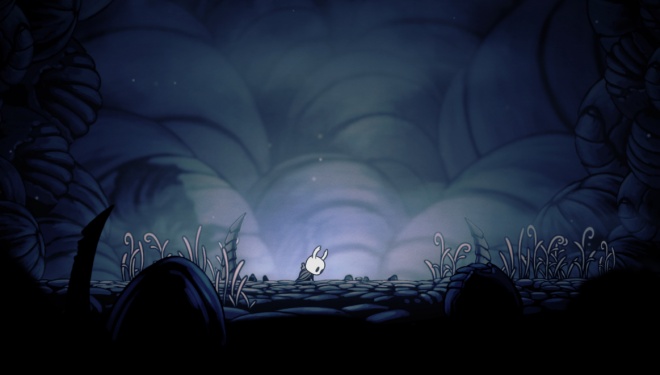
Refined Controls – Most of the gameplay boils down to just pressing the attack button & jumping around obstacles in the environment, but Hollow Knight features some of the most responsive controls in a 2D side-scroller. At the start, the Knight is armed with a large nail, & with each swing that you connect to an enemy’s face, you’ll feel a satisfying thump. The combat itself, while bare-bones, is refined with a sense of immediacy in your physical actions. Even through the platforming, each jump that you successfully land feels weighted down. You aren’t plagued with a sense of floating like some other titles in the genre. Team Cherry did a phenomenal job at making the Knight feel grounded & connected to the world. On top of the controls being handled expertly, perhaps the best aspect of the combat itself is the way in which you regain health. You can only heal yourself through the use of your magic gauge, & the only way to refill that magic gauge is to land successful hits on enemies. This clever design choice encourages you to play aggressively & get right back into the fight, always staying on the offensive – similar in execution to the PS4 title Bloodborne. The combat has the perfect pick-up-and-play nature while still feeling rewarding to master.
Meaningful Design – There a very few tutorials in Hollow Knight. This is another design decision by Team Cherry that works in the game’s favor, as each acquisition of typically mundane items such as a simple map, or the ability to fast travel are significant & feel monumental in your journey. It requires you to pay careful attention, otherwise you may never even acquire a map, as doing so is entirely optional, making the game way more difficult. There’s no hand-holding to be found here, your intelligence is respected & your resolute will to venture forth, exploring Hallownest at every turn without aid, is slowly rewarded. The game is also littered with mini-bosses throughout, each offering a unique optional challenge. Most of the fun from these encounters come from learning their attack patterns & figuring out how to defeat them. Following the theme of very few tutorials, these bosses cleverly foreshadow their attacks & allow for you to learn their weaknesses through intricate means – it forces you to watch their movements closely so that you can dodge their attacks & land a damaging blow.
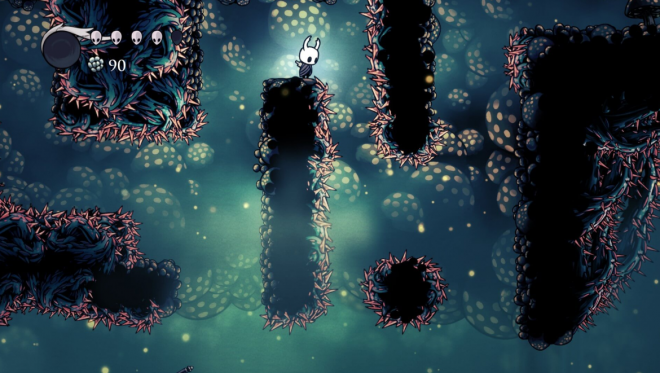
Here’s what I didn’t like:
Uneven Pacing – Hollow Knight even in all of its greatness can feel back-loaded with the pacing. The first couple of hours isn’t indicative of the full experience, leaving the opening levels feeling somewhat like a slog. In the beginning hours, it often feels like you’re meandering about with no true purpose in comparison to later events. Those few levels could do with being tighter or sped up to match with the rest of the game, as it slows the experience down & creates a sense of general unevenness with the trajectory of the Knight’s adventure.
Wrap-up
Hollow Knight is an immediate classic. You’ll be rewarded with every second that you spend playing this game, nothing feels wasted or left as an afterthought save for some minor pacing issues. Team Cherry has crafted a tight, responsive 2D side-scroller that deserves your attention & support as it’s truly a modern masterpiece.
Score: Must Buy

